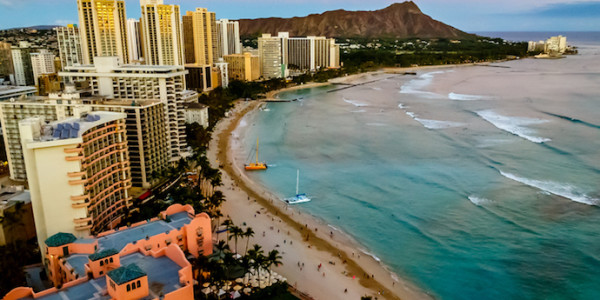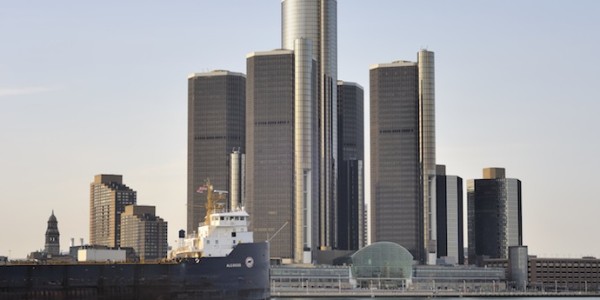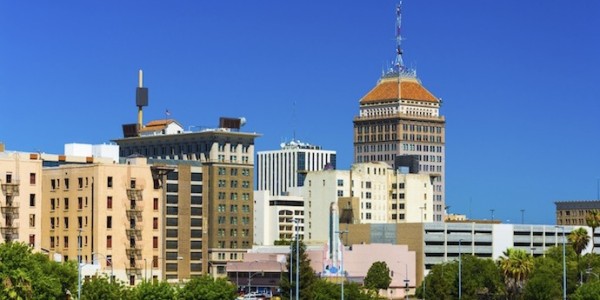Jump to Sections
- Miami At-a-glance
- What it’s like to live in Miami
- Cost of living in Miami
- Economy and job outlook in Miami
- Real estate in Miami
- The top neighborhoods in Miami
- How to get around in Miami
- School and education snapshot
- Weather and climate in Miami
- 10 Can’t miss things to do in Miami
Miami At-A-Glance
Beautiful beaches, next-level nightlife and wonderful weather make Miami a top tourist destination. But does it have anything else to offer people who make this spicy hotspot their permanent residence?
Heck yeah, it does!
Living in Miami means having access to countless year-round recreational opportunities, including world-renowned golf courses and trophy fishing. It also means living in a diverse city with an impressive arts and culture scene and drool-worthy restaurants. With over 70 percent of Miami’s population identifying as Hispanic or Latino and over half of their population coming from other countries, you can expect mouth-watering food and exciting cultural attractions and events at every turn.
And Miami’s bustling economy and zero percent state income tax? Those are just icing on the already delicious cake.
Day-to-Day Life in This Picture-Perfect City
If you decide to move to Miami, get ready to embrace an expensive yet exciting city that offers an unparalleled lifestyle. From its stunning beaches and electric nightlife to its eclectic art scene and diverse food experiences, you’ll question why you didn’t move to Miami sooner.
So, what’s it like living in paradise? Pretty darn amazing. Miami’s vibrancy and beauty lure millions of tourists each year. Miami Beach, in particular, is a mecca for sunseekers. However, the fall and winter months are especially hectic, leaving Magic City seeming a tad less magical.
Professionals in Miami are known to work long, hard hours, making the later business hours here a welcome necessity. If you’re the first one on and last one off a dance floor, put on your dancing shoes because Miami is a non-stop party. There’s a reason this city tops most “Best Spring Break Destinations” lists.
Miami also has galleries, murals and festivals galore, making it a desirable hotspot for artists and art lovers. Although the city’s architectural style runs the gamut, Miami is most well-known for its Art Deco style, specifically on the famous Ocean Drive.
Be Ready to Pay a Pretty Penny in Magic City
Living in a city as stunning and thrilling as Miami means paying more for, well, pretty much everything. General living costs are higher than the national average, and housing costs are an astonishing 47 percent higher. Fortunately, Florida’s low taxes help offset some of the costs.
With an average salary of $70,000, finding affordable housing in Miami can be tricky. Areas like Little Haiti, Allapattah and Model City offer residents reasonable housing costs. On the other end of the scale, some of Miami’s most affluent areas are Star Island, Indian Creek Island and Gables Estates.
From Tourism to Technology: Miami’s Economy is Booming
Miami’s economic landscape is attractive to established corporations, small businesses and tech startups, thanks to the city’s many supportive business incentives. As a result, Miami’s economy is diverse, dynamic and continuously growing.
The city’s prime geographic location has naturally positioned it as a hub for global trade. The city also boasts leading industries such as education, healthcare, tourism and transportation. Miami’s unemployment rate is lower than the national average and its top employers include the University of Miami, Baptist Health South Florida and American Airlines.
Beachfront Mansions, Urban Condos and Everything in Between
Miami’s dynamic real estate market truly has something for every taste and every budget. Due to its popularity, the market is continuously evolving and is experiencing a surge in demand due to:
- The absence of state income tax.
- A pro-business environment that regularly draws new or growing companies.
- The influx of newcomers each year.
- An increase in foreign buyers.
At 70%, renters make up most of Miami’s real estate market. The average rent for a one-bedroom apartment is $1,890, while a two-bedroom unit is approximately $2,415 per month. Studio apartments in the city are slightly more affordable, with an average monthly rent of $1,600. Given the high average home cost of $555,000 in Miami, it’s unsurprising that many residents choose to rent instead of buy.
From Beachfront Bliss to Downtown Dwelling in Miami Neighborhoods
If you love all things luxurious, these two neighborhoods are sure to exceed your expectations.
Star Island: This exclusive, private island in the heart of Biscayne Bay is home to just over 30 estates. Home to athletes, celebrities and other rich but not famous citizens, Star Island, is notorious for its breathtaking waterfront mansions. Most homes have private docks, allowing easy access to a myriad of water activities.
Fisher Island: As one of the wealthiest neighborhoods in America, Fisher Island is as exclusive as it gets. This secluded island can only be accessed by ferry or private yacht, ensuring unparalleled privacy and breathtaking views of the ocean and Miami’s skyline. Fisher Island features world-class amenities such as a golf course, marina, tennis courts and luxury shopping.
On the other hand, two of Miami’s most affordable neighborhoods are:
Flagami: This vibrant and diverse district is just south of Miami International Airport and home to a bustling commercial district. In addition to shops and restaurants, residents here enjoy various recreational facilities. Flagami boasts a golf course, a community waterpark and numerous parks.
Little Havana: Known for its Cuban influences, Little Havana is famous for its main attraction, Calle Ocho (8th Street). Locals and tourists alike are drawn to this vibrant area for its live music, dancing, delicious Cuban cuisine and famous cigars. Little Havana has many parks and green spaces, along with a museum and library.
One of the Most Walkable (Magic) Cities in the U.S.
While driving remains the most common mode of transportation in Miami, the city offers a range of alternative options. The transportation system includes a network of buses and the Metrorail, which covers much of Miami-Dade County. You’ll also find a free trolley service in many areas, and ride-share options like Uber and Lyft.
If you’re looking for more environmentally friendly modes of transportation, cycling and scooters are popular choices, particularly in areas with heavy traffic. Walking is also a viable option. According to walkscore.com, Miami is the “6thmost walkable large city” in America. It boasts a walk score of 77, offering the convenience of completing most errands on foot.
A Wealth of Educational Options to Choose From
The Miami-Dade County Public Schools is the nation’s fourth-largest school district serving over 350,000 students. In terms of private schools, parents can choose between international schools, religious schools or schools with specialized curricula. Although publicly funded, Charter schools operate independently of the Miami-Dade school district. These schools focus on specialized programs such as language immersion, the arts or technology.
Students pursuing a higher education in Miami have several options. Miami Dade College, the University of Miami and Florida International University are three schools that offer a vibrant campus life along with high graduation rates and numerous degree options. For students desiring a more intimate setting in which to earn their degree, there are several smaller colleges and universities in the area.
Hot and Humid With a Chance of Hurricanes
There’s a reason this city’s basketball team is called the Miami Heat. While many people here love the mercury hitting the high 80s, the intense humidity accompanying it, especially during the summer, can be challenging. With an average high of 90 degrees Fahrenheit plus 100 percent humidity, Miami summers can be uncomfortably hot.
Fortunately, Miami experiences a blissful 248 days of sun each year and its tropical monsoon climate brings some relief during its relatively drier winters. Early December to late April is the perfect time to visit this sunny city. It’s also the safest time to visit, as the hurricane season in Miami typically runs from June to November.
10 Can’t-Miss Things to Do in Miami
Miami is a vibrant and exciting city with countless attractions and events. With so many options, it can be challenging to know where to start. Here are five things you just can’t miss:
- You simply HAVE to explore Miami’s world-famous white sand, turquoise water beaches.
- Eat, drink and dance the night away in Little Havana. If you’ve never been to Cuba, this is as authentically Cuban as it gets.
- Explore the unique beauty of the Everglades. Get up close and personal with the alligators and other wildlife on an airboat tour or hiking trail.
- Take a guided tour to experience Miami’s world-renowned Art Deco architecture. Prepare to snap a lot of selfies with South Beach’s famous pastel-colored buildings.
- Miami’s iconic nightlife is not to be missed. Get yourself all gussied up and see what all the fuss is about!
- Cheer on one of Miami’s four professional major league sports teams: The Miami Heat (NBA), The Miami Dolphins (NFL), The Florida Panthers (NHL) or the Miami Marlins (MLB).
- Take a boat tour around Biscayne Bay to marvel at Miami’s breathtaking skyline and the estates of the rich and famous.
- Surround yourself with the elegance of the Vizcaya Museum and Gardens, a historic villa and garden built in 1916.
- Escape for the day to Key West, the southernmost point of the continental United States, and discover its gorgeous beaches, colorful architecture and unique culture.
- Indulge in a day of shopping (or window-shopping) at Bal Harbour Shops, a high-end mall featuring designer stores and chic boutiques.





